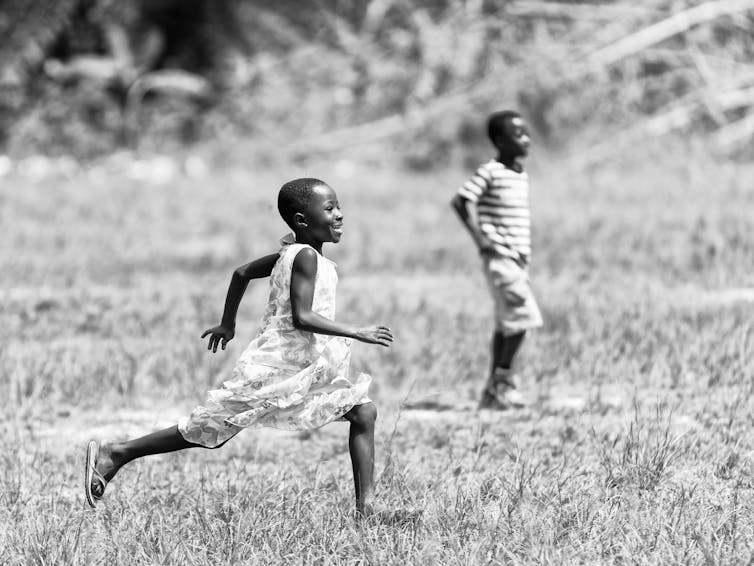
Emmanuel Adebayo, Federal University of Agriculture, Abeokuta
Being a man is usually regarded as an advantage in many social circles. The masculine gender is seen as one that comes with inherent benefits. For example, in many parts of the world being a man makes you an automatic leader within the family as well as society at large.
In research my colleagues and I conducted a review on the gender attitudes of young adolescents. The review, which draws on data from 82 studies from different cultural settings, highlighted the fact that the endorsement of unequal or stereotypical gender norms is already common in that age group. It shows that boys and girls experience distinctly different pressures and sources of gender socialisation
This has consequences, particularly for a range of health factors. While the health of adolescent girls has rightly been the focus of attention in global health agendas given the disadvantages they face, there are several compelling reasons to focus on adolescent boys too.
As boys transition into adolescence, they face distinct risk factors and health problems that shape their health trajectories throughout their lives. The top causes of mortality and morbidity are interpersonal violence and injuries, HIV and AIDS, and suicide. Adolescent boys are also more likely to engage in alcohol, tobacco, and drug use. And boys, similar to men, are less likely than girls and women to seek help early.
The behaviour of adolescent boys, and as they become adults, also have a profound impact on the health and well-being of adolescent girls and women, particularly in relation to sexual and reproductive health.
In the review we drew attention to the types of masculinity norms endorsed in early adolescence and what the key factors were that shaped boys’ gender attitudes. And we looked at available evidence base as the basis of making suggestions on some interventions.
In the first instance, we challenge the opinion that ‘boys are fine’ and that they need little or no help.
Key factors
A number of factors contribute to the health behaviours and outcomes among adolescent boys. But an often ignored determinant is gender; more specifically, the gender socialisation of boys to adopt unequal or stereotypical attitudes related to masculinities.
Although gender socialisation starts early in childhood, early adolescence (ages 10–14 years) is a critical period for shaping gender attitudes, particularly because the onset of puberty brings new and intensifies expectations related to gender.
Societies, in their assumptions about gender roles, have placed the masculine gender above the feminine gender. This is further sanctioned by different institutions within the society including religious and traditional ones. Although these advantages give men more opportunities of wealth creation and leadership positions, they affect men’s health over the years. The life expectancy of males as compared to those of females has consistently been low across different countries globally. In Nigeria women live longer than men too. This trend carries on across Africa.
More adolescent males than females are generally reported to participate in transactional sex. Boys are more likely to visit a sex worker than girls. They are also more likely to die from injury (which is one of the highest causes of mortality among adolescents globally). This brings into question the advantages of ‘masculine inherent benefits’.
Although, the health of girls have rightly been the focus of several interventions, health risk indices among adolescents and young people are strong evidence of why boys should not be neglected.
Studies have reported that as children reach puberty boys have more freedom and autonomy whereas the lives of girls become more controlled and restricted.
What can be done
Changing masculinity norms requires motivating boys to challenge the power and privilege conferred to them, as well as addressing the social ridicule and stigmatisation of those that fail to live up to ideals of masculinity.
There are various approaches that show promise in changing boys’ gender attitudes within a short time frame. These include using small group participatory curricula to prompt boys to think critically about unequal power relations.
However, transforming norms and sustaining broader social change requires taking a sociological approach that targets not only individual boys but also peers, parents, and schools and mobilises entire communities.
Addressing gender socialisation by working with adolescent boys should go hand in hand with efforts to address gender socialisation among adolescent girls, to empower them, and build their self-esteem and agency.
Addressing gender socialisation and masculinity norms among adolescent boys will not only improve their own health and their trajectories into adulthood but also contribute toward the health of women and girls. It will also likely have multiple spill-over benefits in terms of the broader social well-being of families and communities.
Emmanuel Adebayo, Lecturer in child and adolescent health and development at the Child development and family studies unit of the department of Home science and management, Federal University of Agriculture, Abeokuta
This article is republished from The Conversation under a Creative Commons license. Read the original article.

